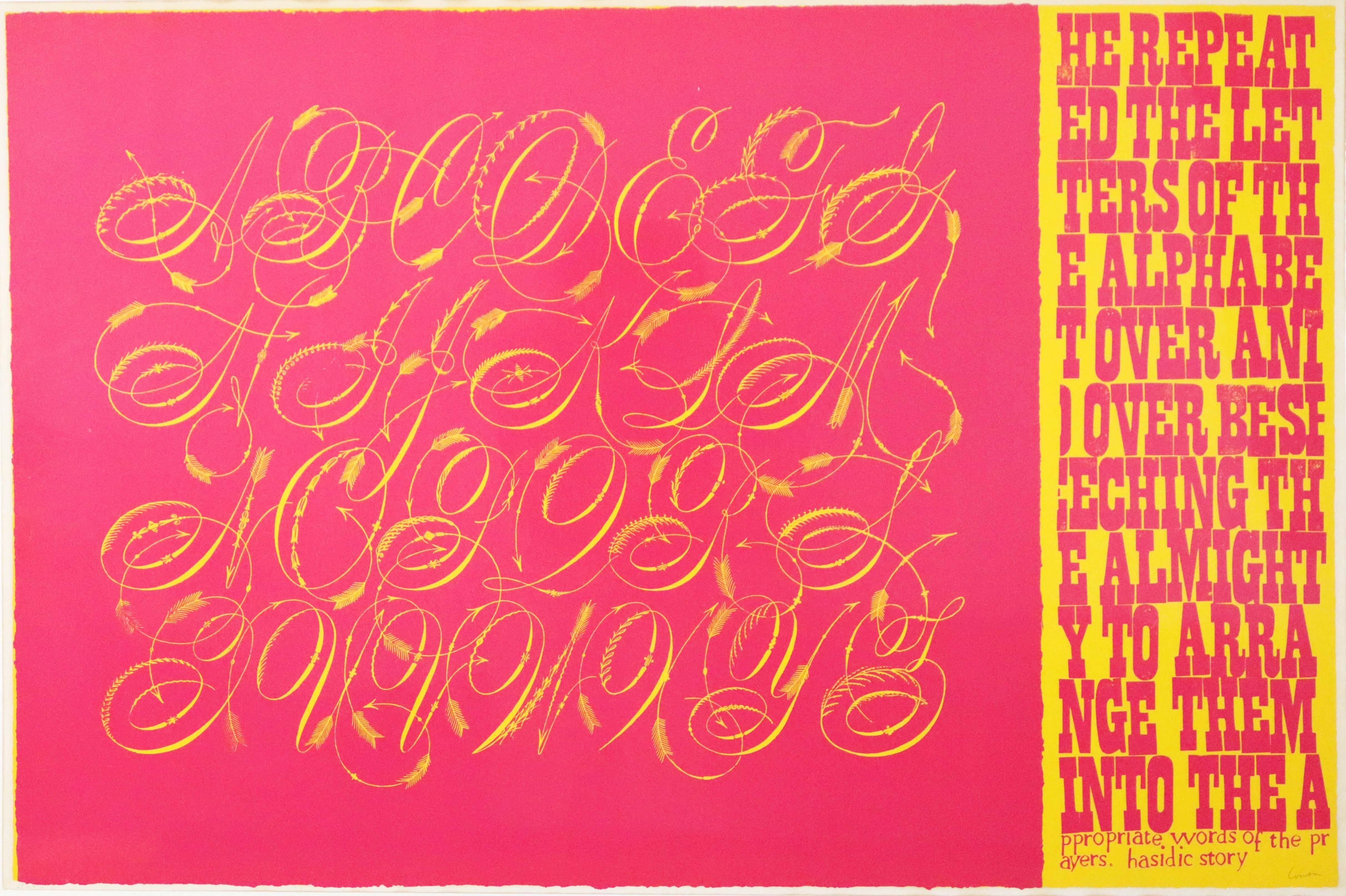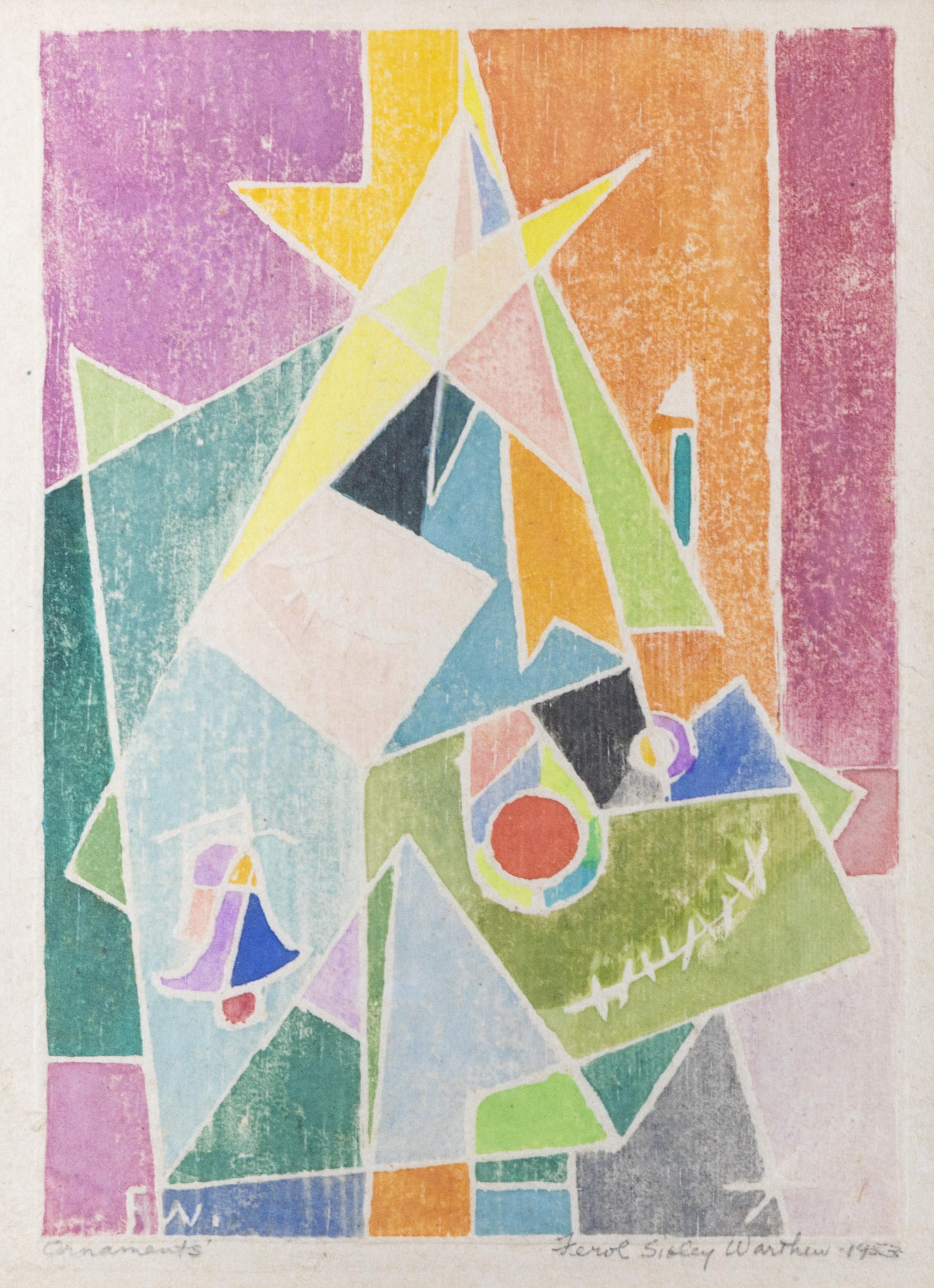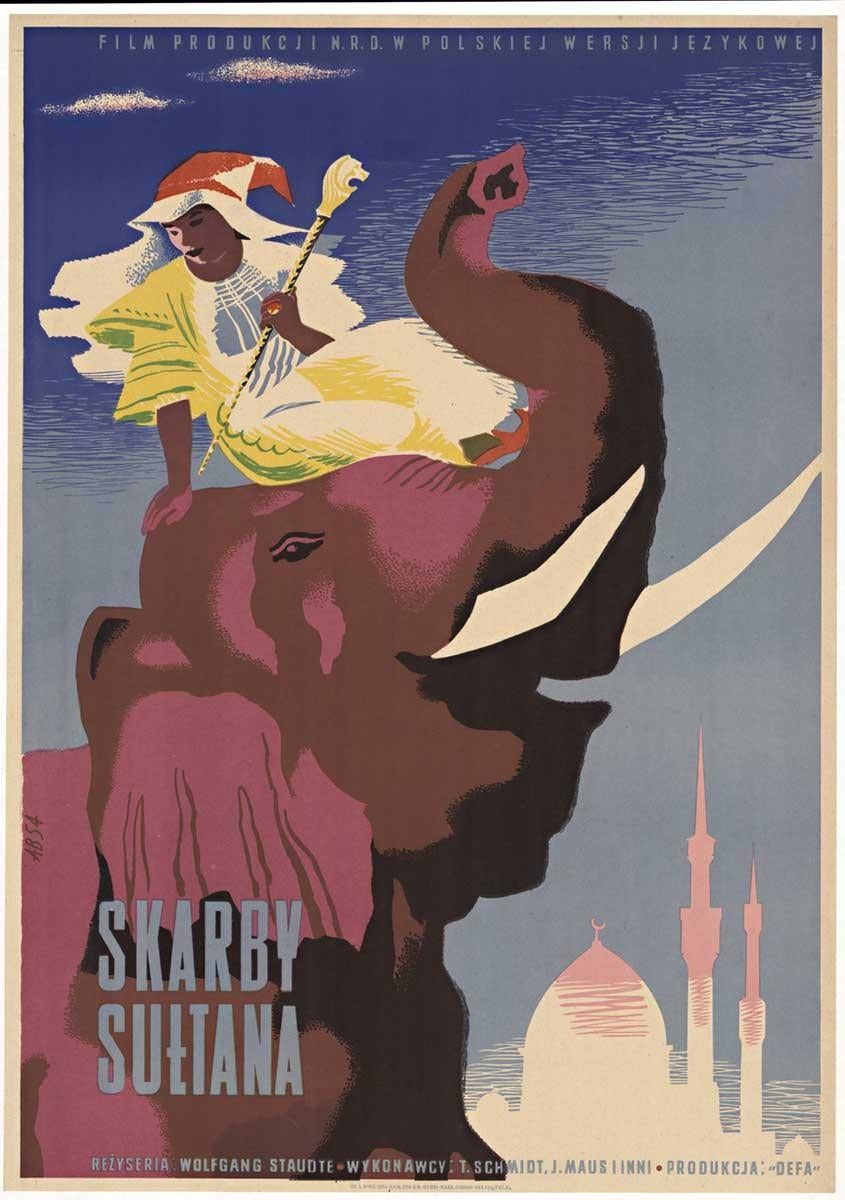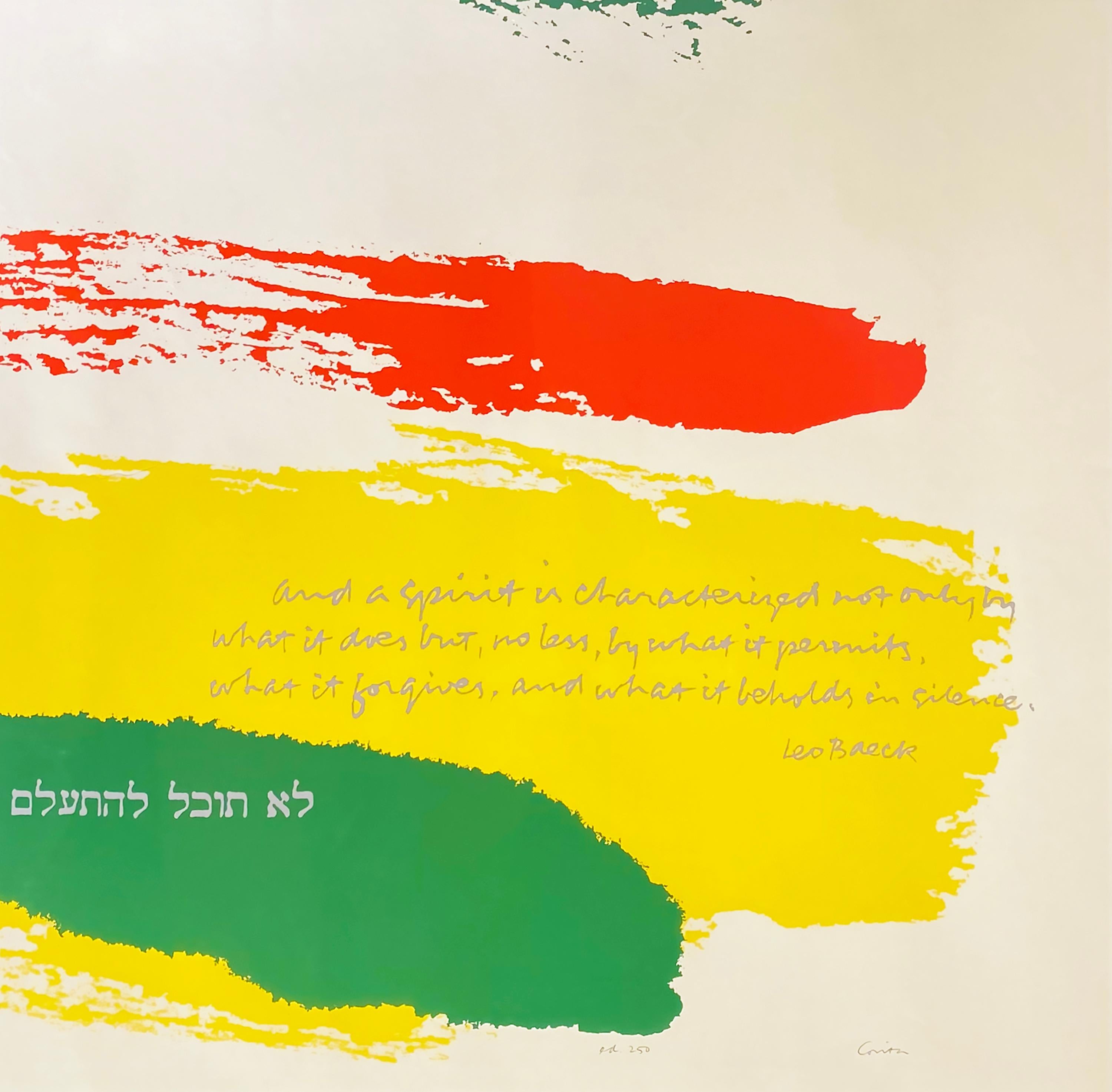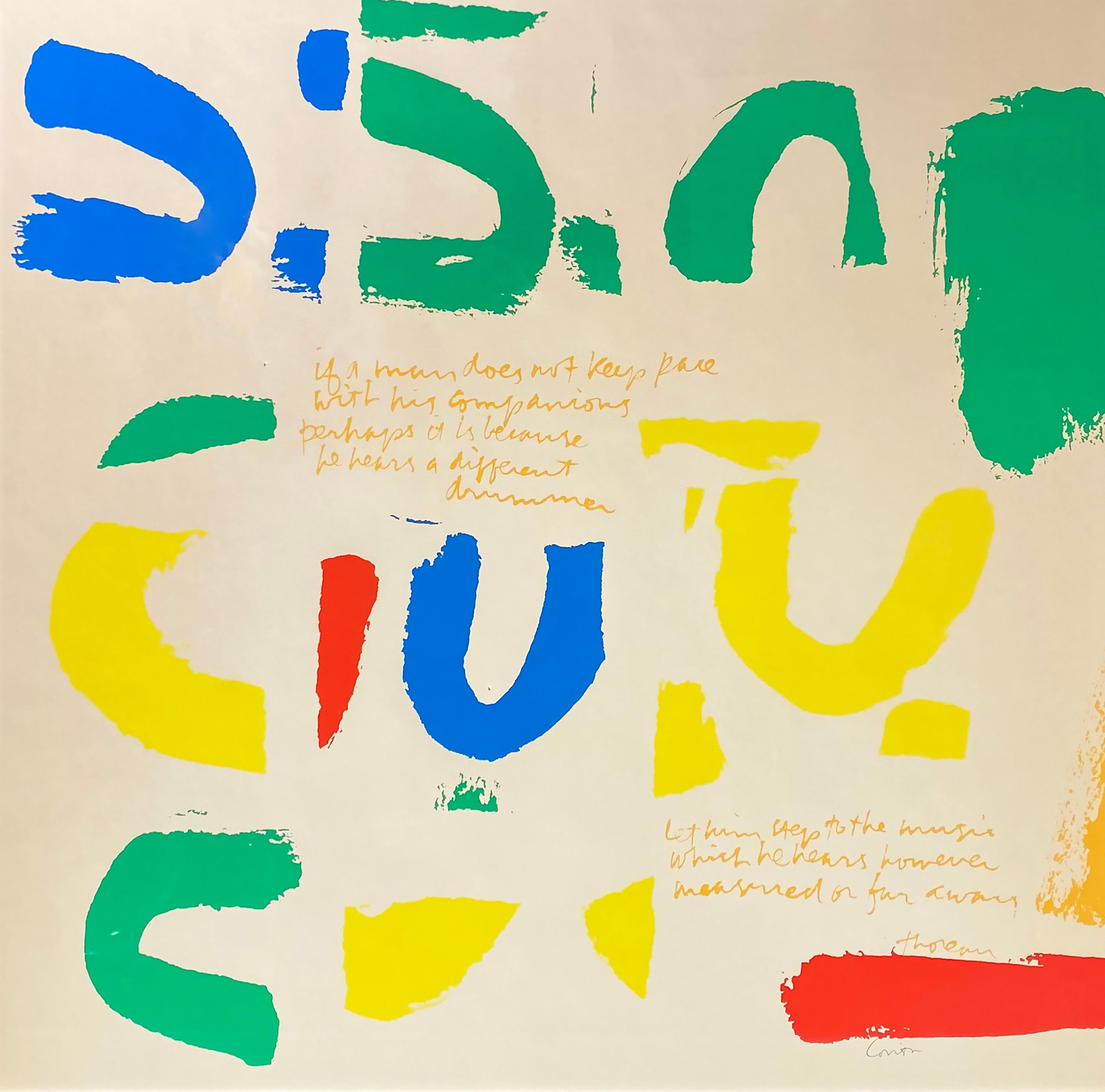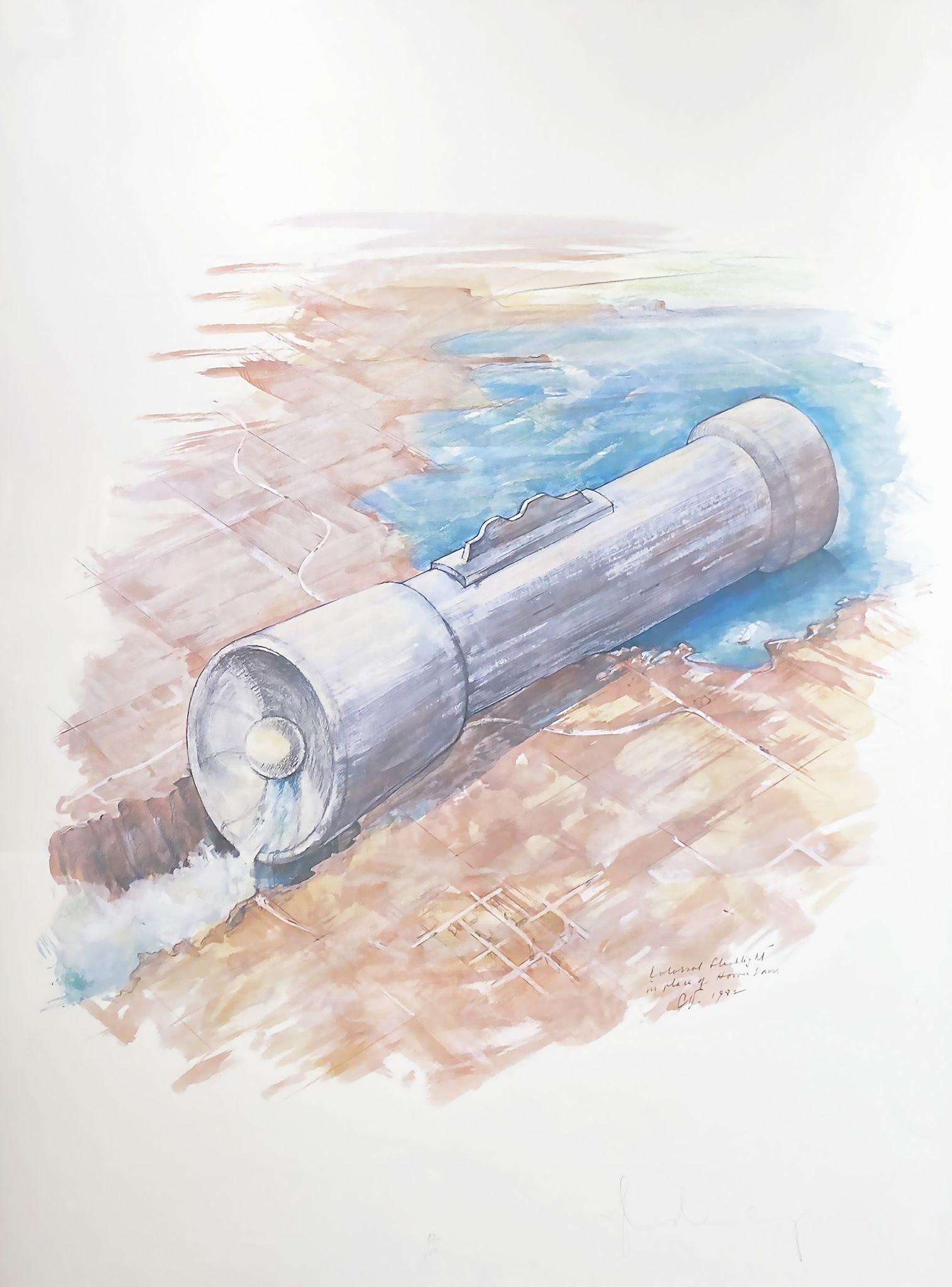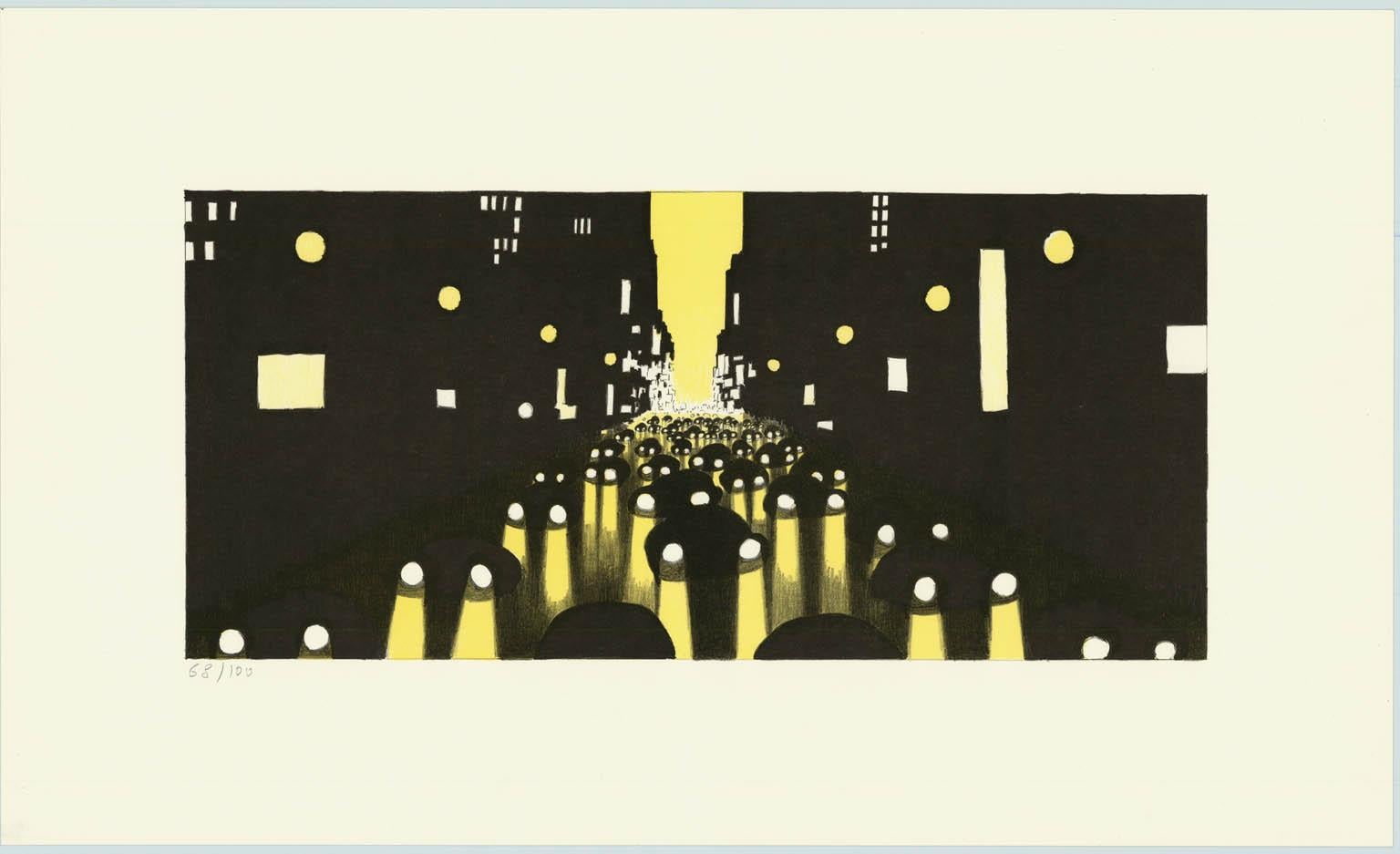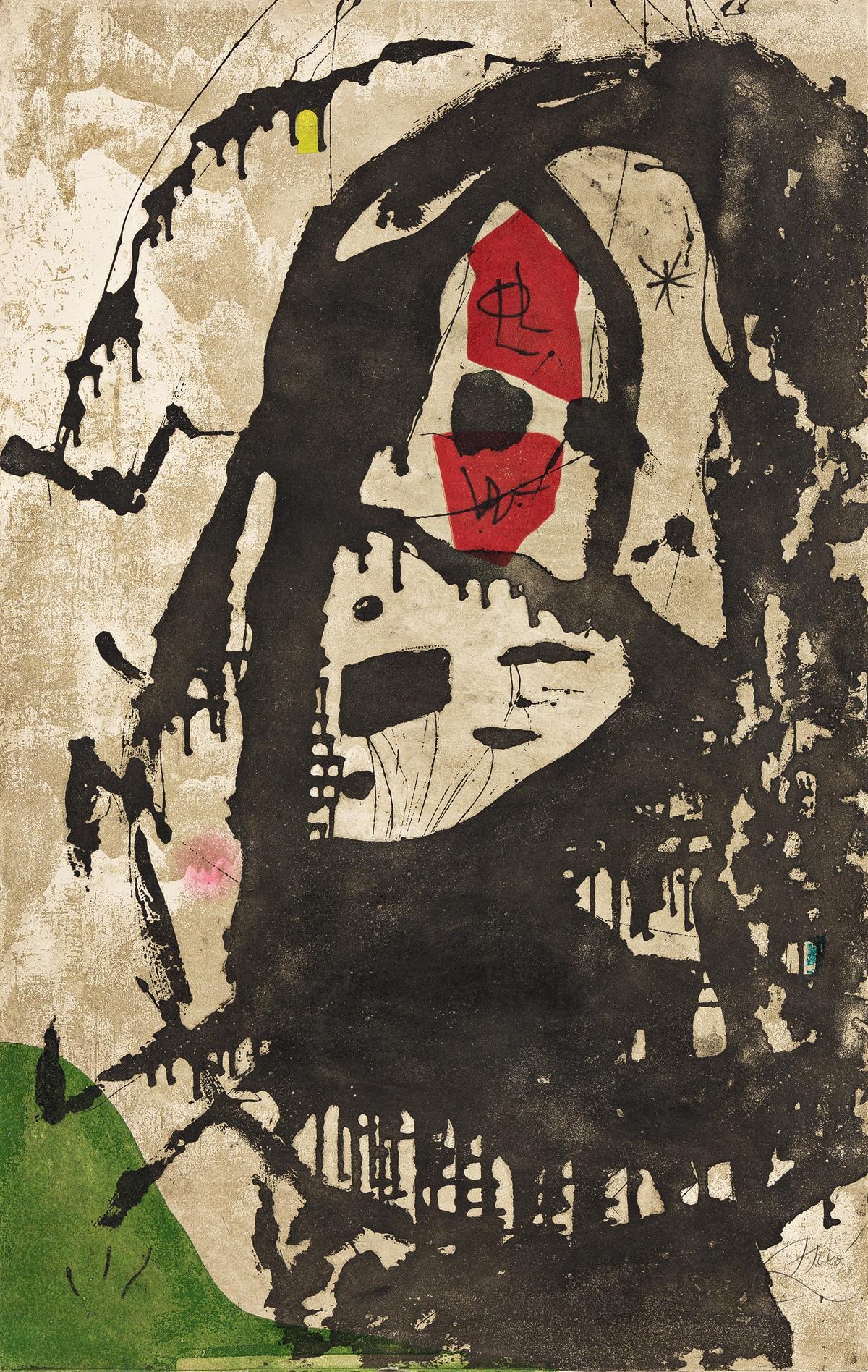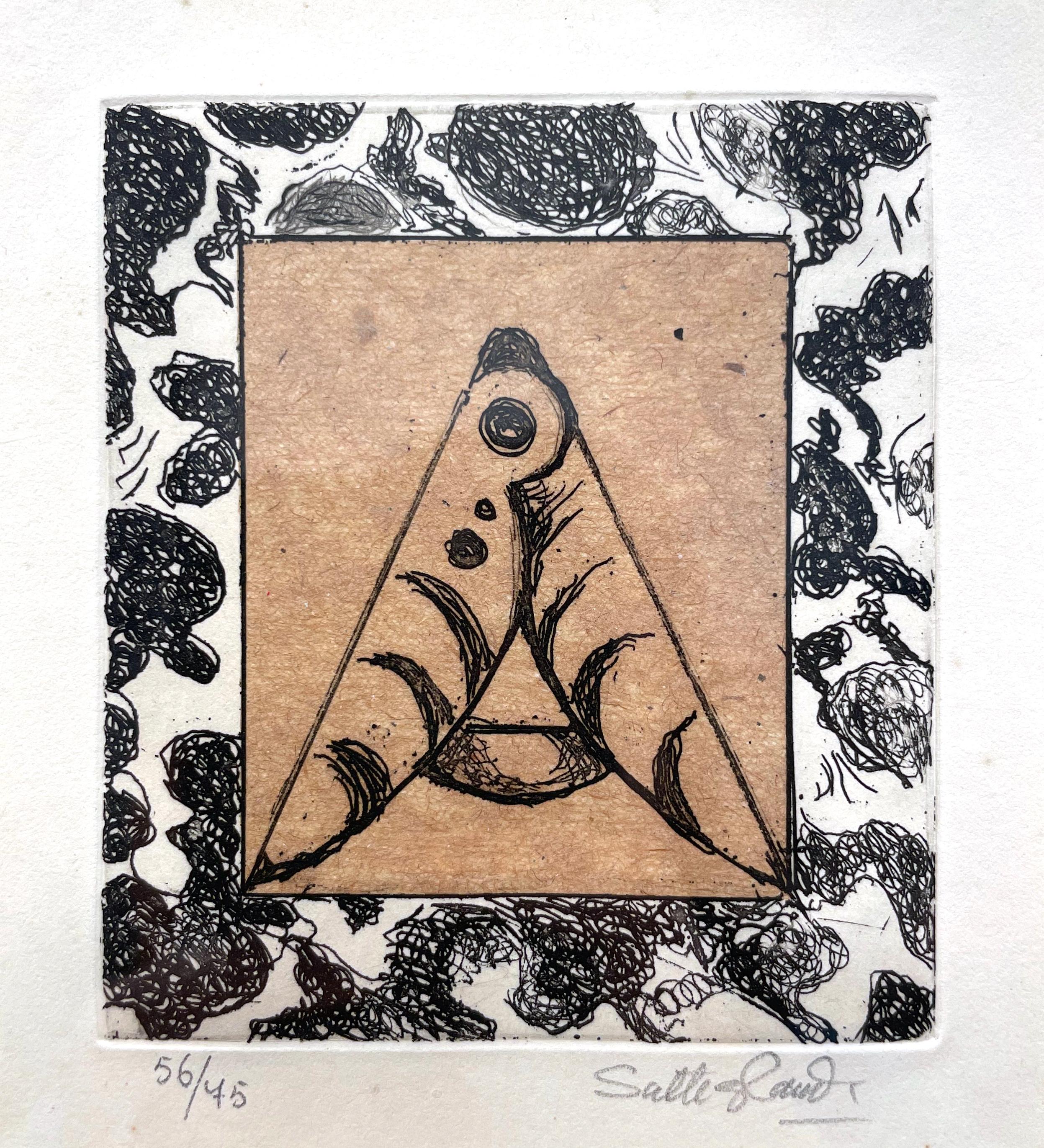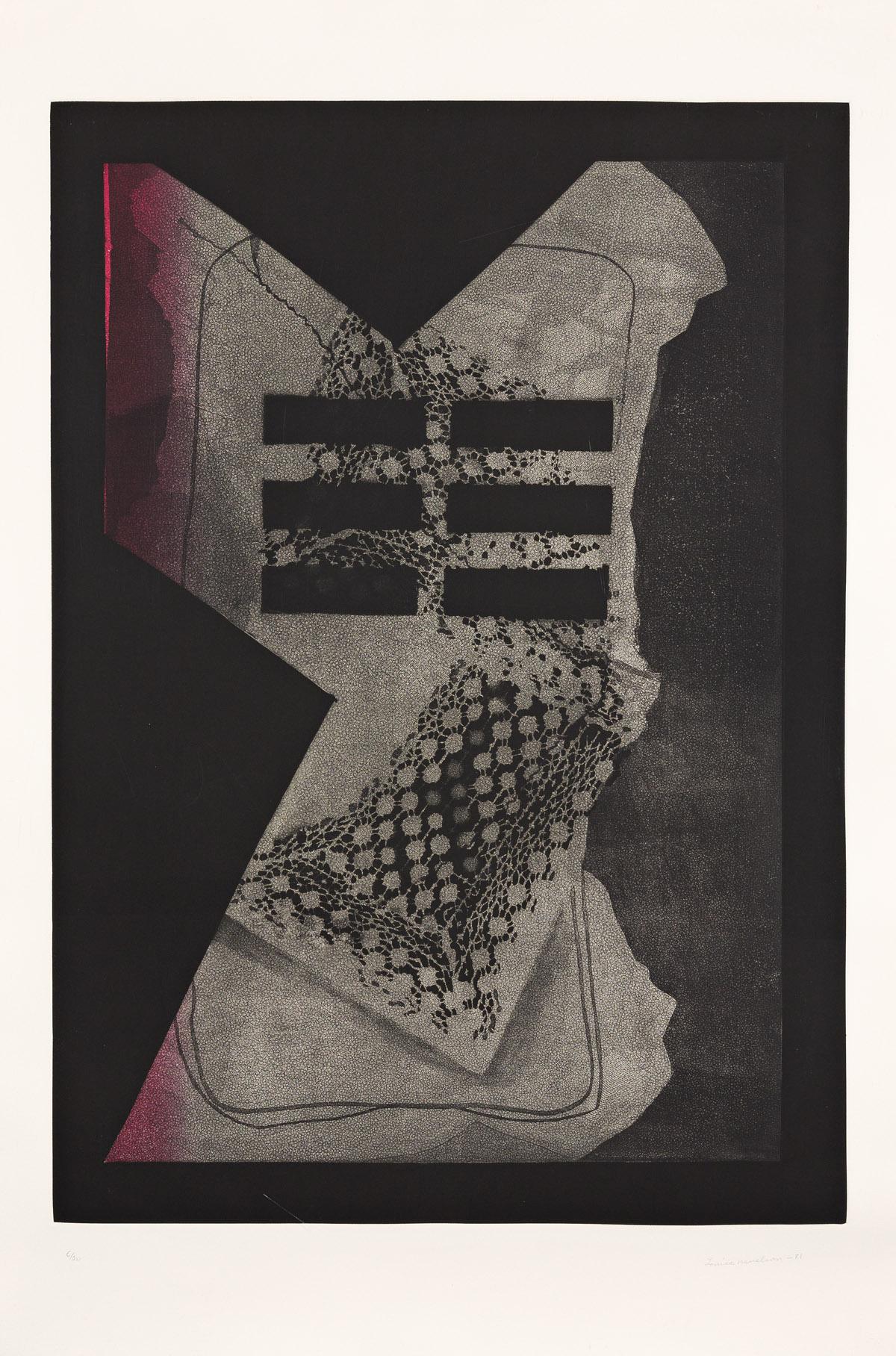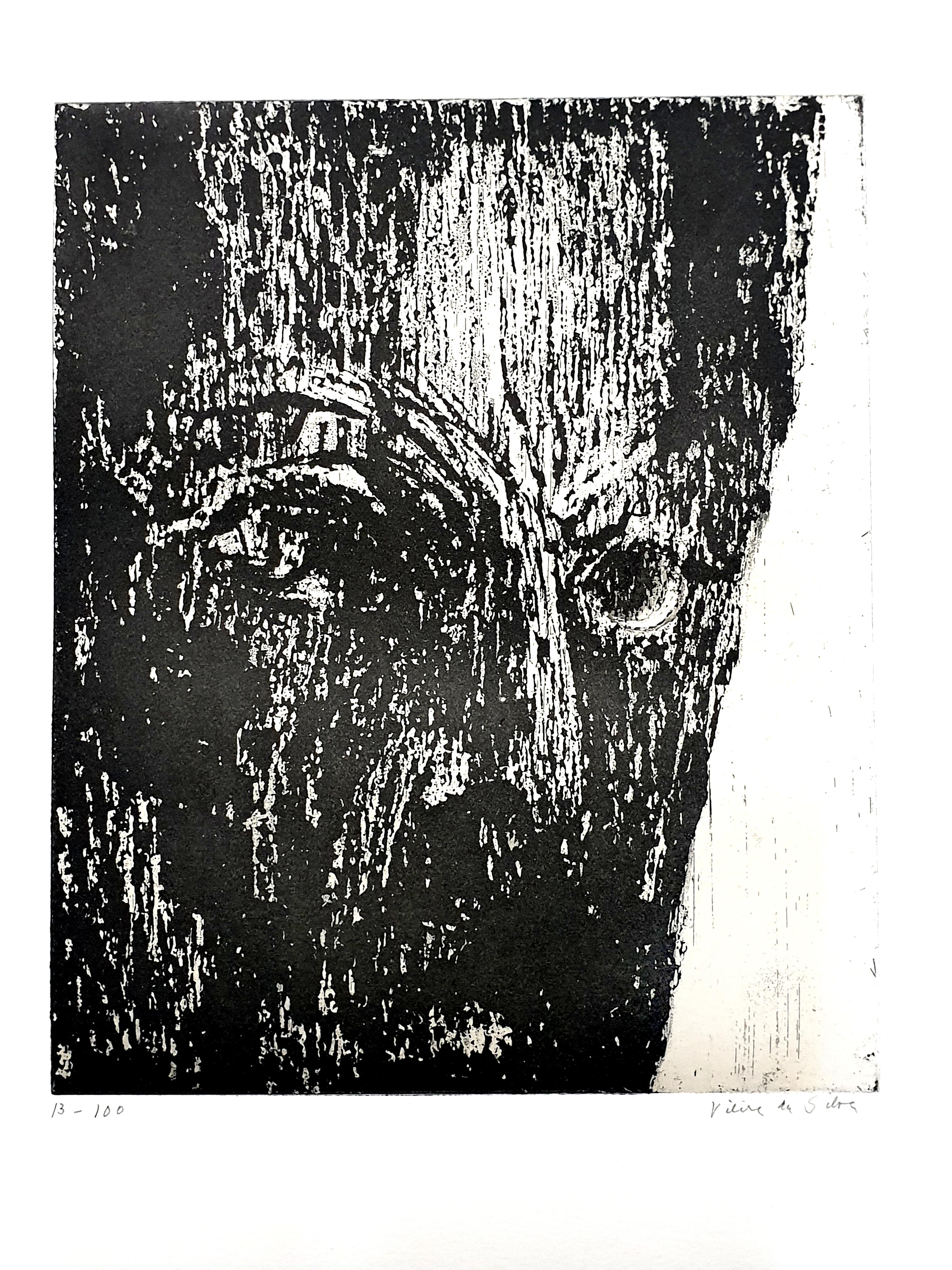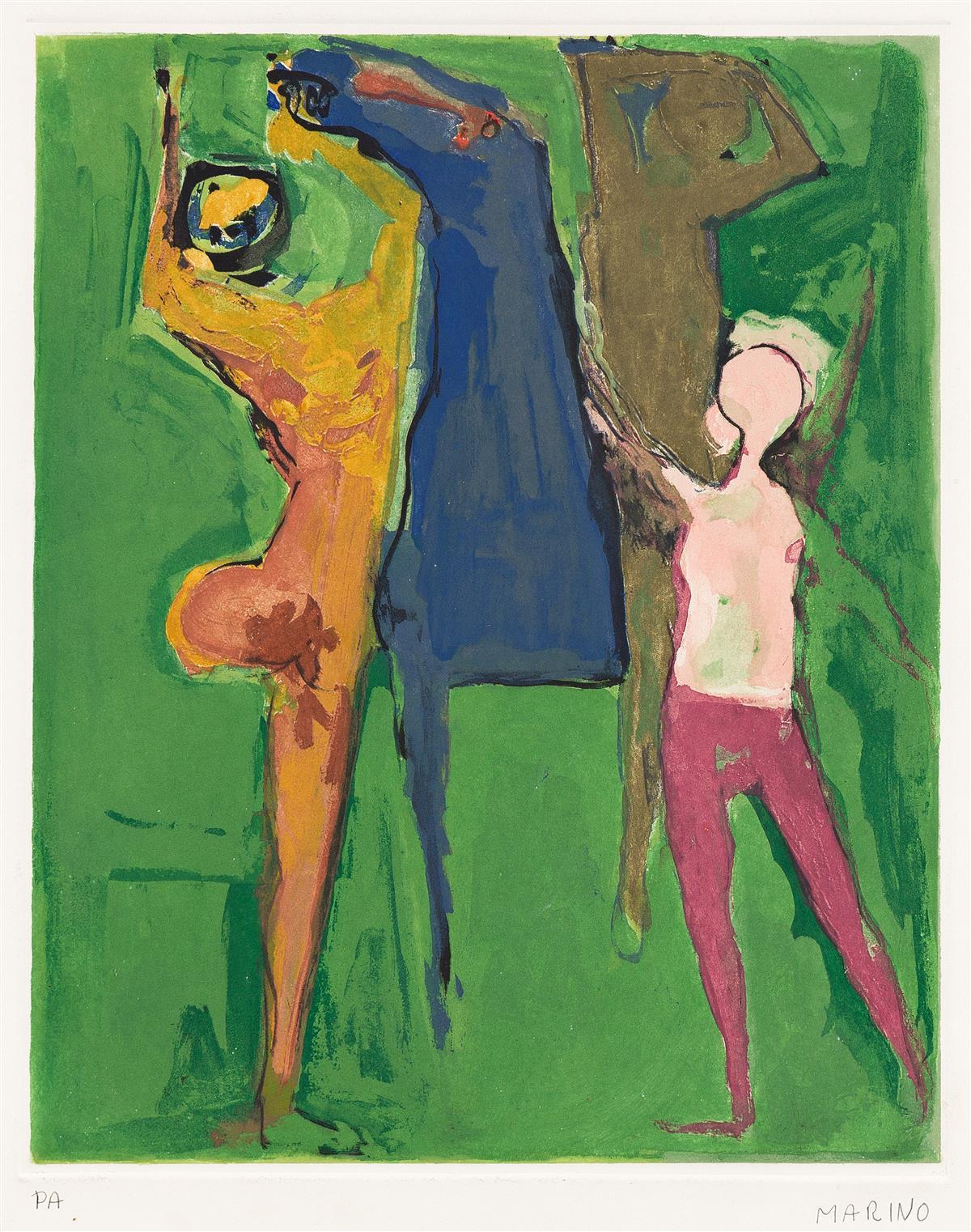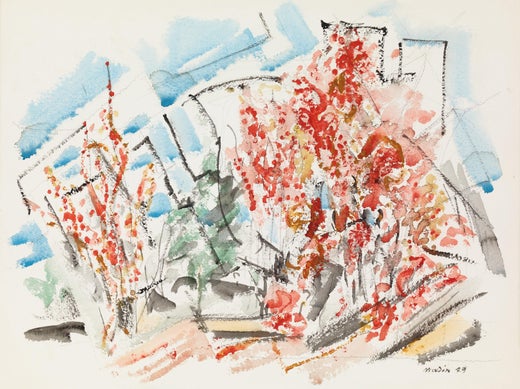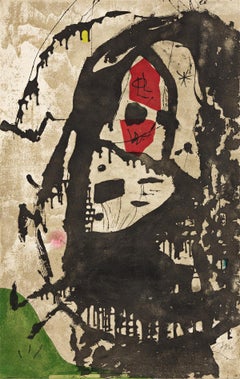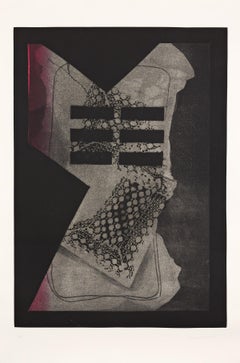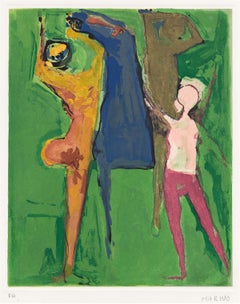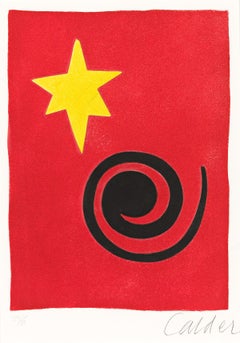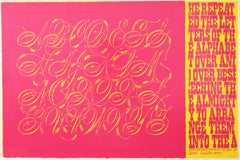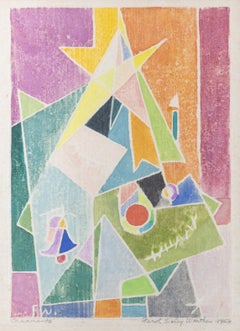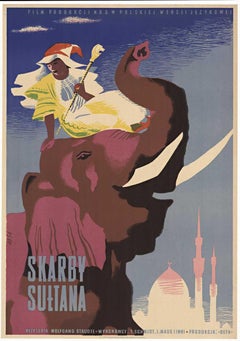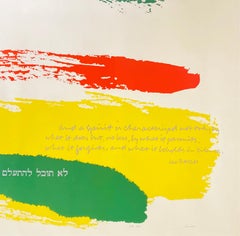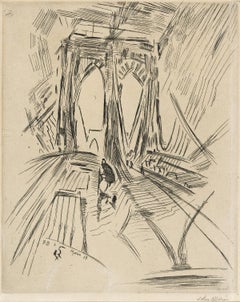
Brooklyn Bridge, No. 6 (Swaying)
View Similar Items
Want more images or videos?
Request additional images or videos from the seller
1 of 2
John MarinBrooklyn Bridge, No. 6 (Swaying)1913
1913
About the Item
- Creator:John Marin (1870-1953, American)
- Creation Year:1913
- Dimensions:Height: 11 in (27.94 cm)Width: 9 in (22.86 cm)
- Medium:
- Movement & Style:
- Period:
- Condition:
- Gallery Location:New York, NY
- Reference Number:1stDibs: LU1477213287462
John Marin
John Marin was born in Rutherford, New Jersey in 1870. His father was a public accountant; his mother died nine days after his birth. He was taken to his maternal grandparents with whom he lived in Weehawken, New Jersey. His grandparents, with their son and two daughters were the only parents Marin was to know; it has been suggested that his father seems to have ignored him. As a child of seven or eight Marin began to sketch and when he was a teenager he had completed his earliest watercolors. His education in the schools of New Jersey was interspersed with summers of hunting, fishing and sketching; he traveled in the Catskills, and as far away as Wisconsin and Minnesota. But formal training was almost incidental to his development as an artist. He is to America what Paul Cezanne was to France - an innovator who helped to oppose the influence of the narrative painters, the illustrators who were more interested in subject than form, in surface than substance. Marin brought to his work a combination of values which, at the turn of the century, was unique in this country: an aliveness of touch, colors that have both sparkle and solidity, and forms that are vibrant with an energy characteristic of our age. Marin established himself as a practicing architect. In the early 1890s, he worked for four architects and by 1893 had designed six houses in Union Hill, New Jersey. At the age of twenty-eight, he decided to become a professional artist and studied briefly at the Pennsylvania Academy of Fine Arts in Philadelphia and the Art Students League in New York City. As a watercolorist he had no equal. He used this fluid, spontaneous medium to abstract from objects - skyscrapers, boats, mountains and seas - a simplified anatomy of color and form and to define the pulsation of stresses and movements in the relationship of objects. It was a great disappointment, all his life, that his oil paintings did not achieve the popularity that his watercolors did. From 1905 to 1910 he worked in Europe, where he was influenced by Whistler's watercolors. It was Alfred Stieglitz, Marin's lifetime friend and dealer, whose firm faith in his genius made his position in the art world possible. He developed a distinctive style that he used most characteristically in powerful watercolors of the Maine coast. During the 1920s he provided the dominant force in the movement away from naturalistic representation towards an art of expressive semi-abstraction. He married Marie Jane Hughes after he returned to New York. They had one son, who grew up to run his father's considerable affairs. Marin continued to work at the same steady fast pace as long as he lived. Since 1908 he had produced 1700 paintings, an average of forty a year. He had made the frames for them as well. At the age of seventy-nine, he began to taper off from the days when he painted one hundred watercolors in a summer. He died in 1953.
About the Seller
4.9
Vetted Professional Seller
Every seller passes strict standards for authenticity and reliability
Established in 2020
1stDibs seller since 2021
100 sales on 1stDibs
Typical response time: 13 hours
Authenticity Guarantee
In the unlikely event there’s an issue with an item’s authenticity, contact us within 1 year for a full refund. DetailsMoney-Back Guarantee
If your item is not as described, is damaged in transit, or does not arrive, contact us within 7 days for a full refund. Details24-Hour Cancellation
You have a 24-hour grace period in which to reconsider your purchase, with no questions asked.Vetted Professional Sellers
Our world-class sellers must adhere to strict standards for service and quality, maintaining the integrity of our listings.Price-Match Guarantee
If you find that a seller listed the same item for a lower price elsewhere, we’ll match it.Trusted Global Delivery
Our best-in-class carrier network provides specialized shipping options worldwide, including custom delivery.More From This Seller
View AllEls Gossos VI
By Joan Miró
Located in New York, NY
A superb impression of this large color etching. Signed and numbered 29/30 in pencil, lower margin. Printed by Joan Barbarà, Barcelona. Published by Maegh...
Category
1970s Modern Abstract Prints
Materials
Color, Etching
$10,000
Untitled
By Louise Nevelson
Located in New York, NY
A very good impression of this extremely scarce color aquatint and etching on cream wove paper. Signed and numbered 6/20 in pencil by Nevelson.
Category
1980s Modern Abstract Prints
Materials
Color, Etching, Aquatint
$2,500 Sale Price
44% Off
Marino from Shakespeare
By Marino Marini
Located in New York, NY
A very good impression of this color aquatint and etching. Artist's proof, aside from the edition of 75. Signed and inscribed "PA" in pencil. Printed by Labryrinth, Florence. Publish...
Category
1970s Modern Abstract Prints
Materials
Color, Etching, Aquatint
Fêtes
By Alexander Calder
Located in New York, NY
Complete set of 7 color aquatints on Arches. The deluxe edition of 25 signed by Calder and numbered, aside from the unsigned edition of 150. Each but one of the aquatints signed and ...
Category
1970s Modern Abstract Prints
Materials
Color, Aquatint
$22,000
La Puisatier
By Joan Miró
Located in New York, NY
A very good, richly-inked impression of this large color aquatint, etching and carborundum. An "hors commerce" impression, aside from the edition of 75. Signed and inscribed "H.C." i...
Category
1960s Modern Abstract Prints
Materials
Color, Etching, Aquatint
$10,000
Canto Pisan
By Zao Wou-Ki
Located in New York, NY
A superb, richly-inked impression of this very scarce, early proof color aquatint on Arches. Artist's proof, aside from the edition of 180. Signed, dated and inscribed "H II fer pass...
Category
1970s Modern Abstract Prints
Materials
Color, Aquatint
You May Also Like
He Repeated the Letters of the Alphabet
By Corita Kent
Located in Missouri, MO
Sister Mary Corita Kent (American, 1918-1986)
He Repeated the Letters of the Alphabet...
Color Screenprint
22.5 x 38.75 inches
Signed Lower Right
Sister Mary Corita Kent, once the n...
Category
Mid-20th Century American Modern Abstract Prints
Materials
Color, Screen
Ornaments
Located in Missouri, MO
Ornaments, 1953
Ferol K. Sibley Warthen (American, 1890-1986)
Color Woodblock Print
7 x 4.75 inches
16 x 13.75 inches with frame
Signed and Dated Lower Right
Titled Lower Left
Born 1890, Died 1986...
Category
1950s American Modern Abstract Prints
Materials
Color
Original Skarby Sultana a.k.a. The Story of Little Muck vintage poster
Located in Spokane, WA
Orignial Skarby Sultana vintage poster. A.k.a.The Story of Little Much. Archival linen-backed Very good condition A. Bright and vibrant, lithograph, no stains, no damage, no...
Category
1950s American Modern Abstract Prints
Materials
Lithograph
Leo Baeck "and a Spirit is Characterized"
By Corita Kent
Located in Missouri, MO
Leo Baeck and a Spirit is Characterized
Sister Mary Corita Kent (American, 1918-1986)
Signed Lower Right in Pencil
Edition of 250 Lower center
21.5 x 21.5 inches
24 x 24 inches frame...
Category
20th Century American Modern Abstract Prints
Materials
Color, Lithograph
Price Upon Request
Thoreau "If a Man Does Not Keep Peace"
By Corita Kent
Located in Missouri, MO
Thoreau "If a Man Does Not Keep Peace"
Sister Mary Corita Kent (American, 1918-1986)
Signed in Pencil Lower Right
22.5 x 22.5 inches
23.25 x 23.25 inches with frame
Sister Mary Cori...
Category
20th Century American Modern Abstract Prints
Materials
Color, Lithograph
Price Upon Request
Colossal Flashlight in Place of Hoover Dam
By Claes Oldenburg
Located in Missouri, MO
Colossal Flashlight in Place of Hoover Dam, 1982
By Claes Oldenburg (Swedish, American, 1929-2022)
Signed Lower Right
Dated Middle Right
Unframed: 23" x 22"
Framed: 36.5" x 27.5"
Whimsical sculpture of pop culture objects, many of them large and out-of-doors, is the signature work of Swedish-born Claes Oldenburg who became one of America's leading Pop Artists. He was born in Stockholm, Sweden. His father was a diplomat, and during Claes' childhood moved his family from Stockholm to a variety of locations including Chicago where the father was general consul of Sweden and where Oldenburg spent most of his childhood. He attended the Latin School of Chicago, and then Yale University where he studied literature and art history, graduating in 1950, the same year Claes became an American citizen.
Returning to Chicago, he enrolled at the Art Institute of Chicago from 1952 to 1954 and also worked as a reporter at the City News Bureau. He opened his own studio, and in 1953, some of his satirical drawings were included in his first group show at the Club St. Elmo, Chicago. He also painted at the Oxbow School of Painting in Michigan.
In 1956, he moved to New York where he drew and painted while working as a clerk in the art libraries of Cooper-Union Museum for the Arts of Decoration. Selling his first artworks during this time, he earned 25 dollars for five pieces.
Oldenburg became friends with numerous artists including Jim Dine, Red Grooms and Allan Kaprow, who with his "Happenings" was especially influential on Oldenburg's interest in environmental art. Another growing interest was soft sculpture, and in 1957, he created a piece later titled Sausage, a free-hanging woman's stocking stuffed with newspaper.
In 1959, he had his first one-man show, held at the Judson Gallery at Washington Square. He exhibited wood and newspaper sculpture and painted papier-mache objects. Some viewers of the exhibit commented how refreshing Oldenburg's pieces were in contrast to the Abstract Expressionism, a style which much dominated the art world. During this time, he was influenced by the whimsical work of French artist, Bernard Buffet, and he experimented with materials and images of the junk-filled streets of New York.
In 1960, Oldenburg created his first Pop-Art Environments and Happenings in a mock store full of plaster objects. He also did Performances with a cast of colleagues including artists Lucas Samaras, Tom Wesselman, Carolee Schneemann, Oyvind Fahlstrom and Richard Artschwager, dealer Annina Nosei, critic Barbara Rose, and screenwriter Rudy Wurlitzer.
His first wife (1960-1970) Pat Muschinski, who sewed many of his early soft sculptures, was a constant performer in his Happenings. This brash, often humorous, approach to art was at great odds with the prevailing sensibility that, by its nature, art dealt with "profound" expressions or ideas.
In December 1961, he rented a store on Manhattan's Lower East Side to house "The Store," a month-long installation he had first presented at the Martha Jackson Gallery in New York. This installation was stocked with sculptures roughly in the form of consumer goods.
Oldenburg moved to Los Angeles in 1963 "because it was the most opposite thing to New York I could think of". That same year, he conceived AUT OBO DYS, performed in the parking lot of the American Institute of Aeronautics and Astronautics in December 1963.
In 1965 he turned his attention to drawings and projects for imaginary outdoor monuments. Initially these monuments took the form of small collages such as a crayon image of a fat, fuzzy teddy bear looming over the grassy fields of New York's Central Park (1965) and Lipsticks in Piccadilly Circus, London (1966). Oldenburg realized his first outdoor public monument in 1967; Placid Civic Monument took the form of a Conceptual performance/action behind the Metropolitan Museum of Art, New York, with a crew of gravediggers digging a 6-by-3-foot rectangular hole in the ground.
Many of Oldenburg's large-scale sculptures of mundane objects elicited public ridicule before being embraced as whimsical, insightful, and fun additions to public outdoor art. From the early 1970s Oldenburg concentrated almost exclusively on public commissions.
Between 1969 and 1977 Oldenburg had been in a relationship with Hannah Wilke, feminist artist, but in 1977 he married Coosje van Bruggen, a Dutch-American writer and art historian who became collaborator with him on his artwork. He had met her in 1970, when she curated an exhibition for him at the Stedelijk Museum in Amsterdam. Their first collaboration came when Oldenburg was commissioned to rework Trowel I, a 1971 sculpture of an oversize garden tool, for the grounds of the Kröller-Müller Museum in Otterlo, the Netherlands.
Oldenburg has officially signed all the work he has done since 1981 with both his own name and van Bruggen's. In 1988, the two created the iconic Spoonbridge and Cherry sculpture for the Walker Art Center in Minneapolis, Minnesota that remains a staple of the Minneapolis Sculpture Garden as well as a classic image of the city. Typewriter Eraser...
Category
20th Century American Modern Abstract Prints
Materials
Paper, Lithograph
Price Upon Request
